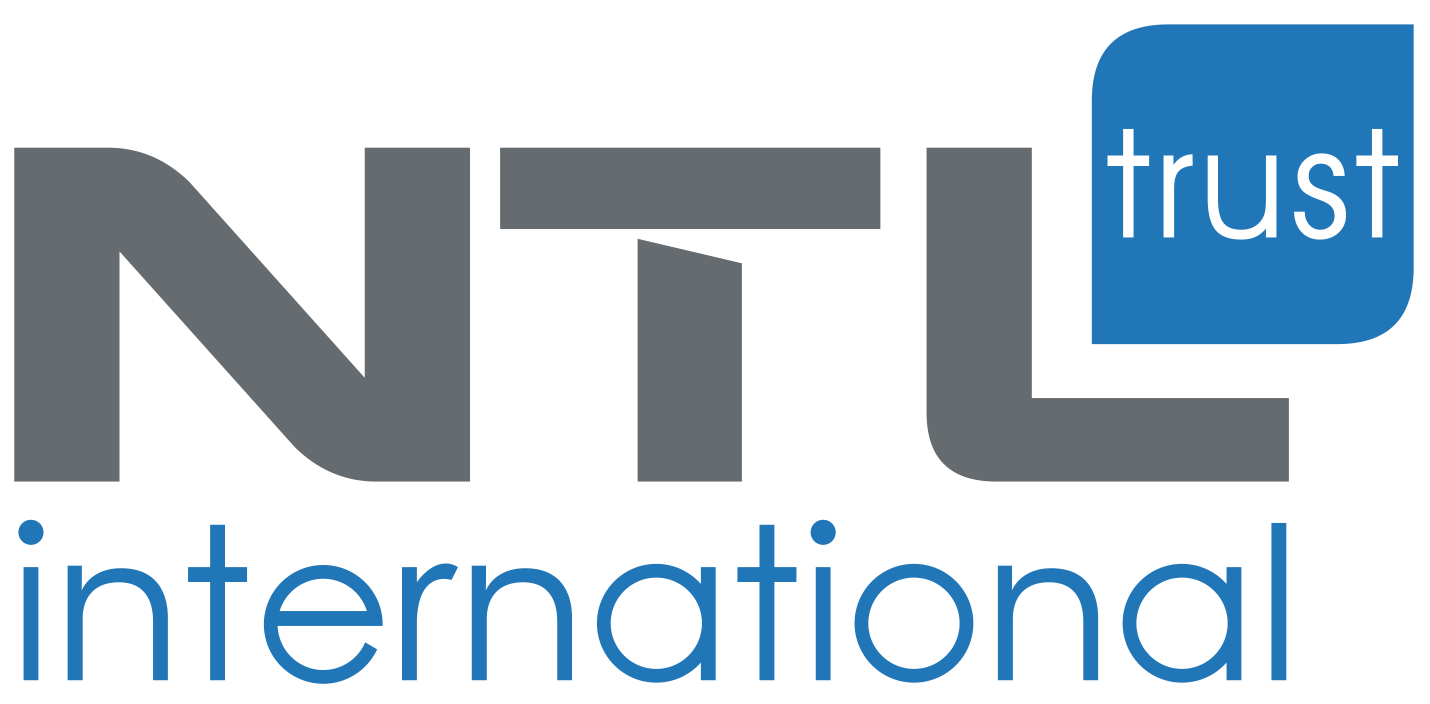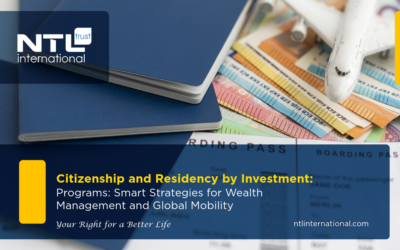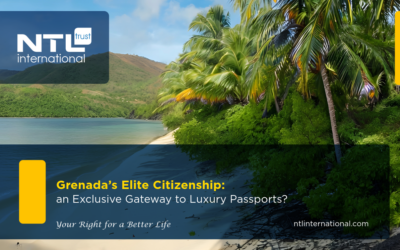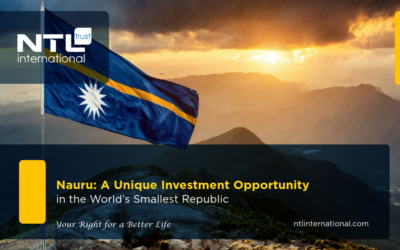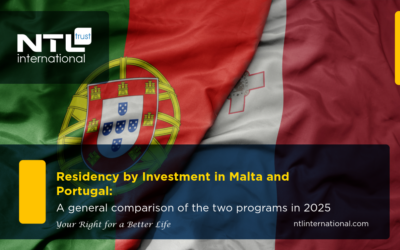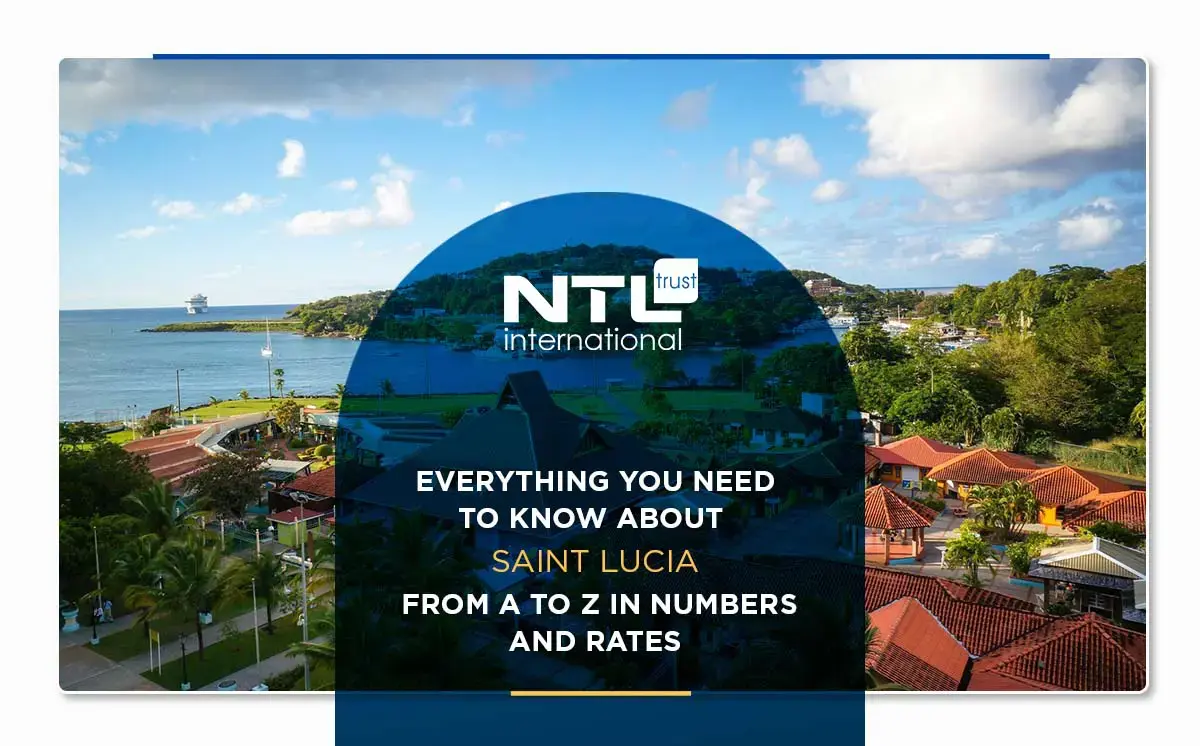
From A to Z about St. Lucia
Important Facts and Information
St. Lucia is located in an important geographical location, which makes it one of the favorite places for anyone looking to spend a vacation full of diversity and fun. It is also one of the countries in the Caribbean region that offers a citizenship by investment program, and it may be the perfect choice for every investor looking for a new opportunity and wishing to obtain a second passport that gives him many advantages.
Therefore, today we will be in a detailed article on information that you may read some of for the first time about everything related to this island, where the following addresses will be discussed:
- Geographical location.
- The most important historical stations.
- Economic structure.
- Origins of the population.
- What does St. Lucia citizenship offer investors?
- Investment options for obtaining investment citizenship.
- Economy of St. Lucia.
- Tax rate.
- Cost of living.
- State Building Structure.
- Origins of the population.
- The original language of the local population.
- The official religion.
- Landforms.
- The industry.
- Trade, import, and export on the island.
- Average rental property.
- Education.
- Sports and its types on the island.
- How many airports are there?
- Public transportation.
- The most important tourist areas.
- The most important national events.
Geographical location of Saint Lucia Island:
The island is located in the southern part of South America, bordered to the northeast by the island of St. Vincent, which also belongs to the Caribbean region, and to the south by the Martinique Islands. The island is about 385 km north of Venezuela, to the north. St. Lucia has an area of 616 square km. The population is 186 thousand people. The city of Castries took the title of the capital after this title was for the city of View Fort.
The most important historical stations in St. Lucia:
The island gained its name following the example of Saint Lucia, and it was explorer Christopher Columbus who named the island by that name. It is worth noting that Saint Lucia and Ireland are the only two countries in the world that bear the name of a woman.
The island was discovered on December 13, 1502.
In 1979, on February 22nd, St. Lucia gained its independence and became a sovereign state in the British Commonwealth.
What does the economic structure of St. Lucia look like?
- Saint Lucia’s economy depends on tourism 60%, followed by agriculture and fishing. It is worth noting that citizenship by investment programs provide economic support to the country by financing tourism projects approved by the government.
- The income of the investment citizenship program has contributed to improving the income rate and thus boosting tourism and infrastructure.
- In terms of infrastructure on the island of St. Lucia, earthquake-resistant houses were built, and many hotels, dams, and roads linking valleys and mountains were built.
- Among the most important fruit trees that are cultivated are bananas, mangoes, oranges, grapes, coconuts, and cocoa.
The fruit is exported to America and the United Kingdom, in addition to the existence of many trade relations with the countries of the Caribbean region that are signatories to the CARICOM agreement.
What are the investment options to obtain investment citizenship in St. Lucia?
- Donate a non-refundable amount of money to the National Economic Fund (NEF) starting at $100,000.
- Purchase of government bonds for $300,000 plus management fees.
- Investing in one of the leading projects with a value of no less than $3,500,000 for the applicant only.
- Or an amount of $6,000,000 in a joint venture with several investors so that the share of one investor is not less than $1,000,000.
On the other hand, the investor must pay all administrative fees, criminal investigation examination fees, and administrative fees, but the amount varies according to the number of family members who have been added to the application.
What does St. Lucia citizenship offer investors?
- Freedom to travel to more than 146 countries without a visa, including the European Union, the United Kingdom, Singapore, and Canada.
- The Citizenship by Investment Program ranked fourth in 2021 and ranked first in 2023.
- Investment can be redeemed after 5 years.
- Lowest tax rates and free trade environment.
- Beneficial tax regime – you will not be liable for any income tax, capital gains tax, or inheritance tax.
Economy in St. Lucia:
In the past, it depended on the cultivation of sugar cane to a large extent, but the production of this substance stopped in 1964 so the focus was on the cultivation of bananas, which is the most important crop in St. Lucia.
How much is the tax rate in St. Lucia?
Citizens of Saint Lucia enjoy the benefit of exemption from taxation on any external source of income, in addition to exemption from wealth and inheritance taxes.
List of tax rates in St. Lucia:
- The income tax earned in Saint Lucia is 0.30%.
- Property tax of 0.4% on each commercial property and 0.25% on each residential property.
- The property transfer tax ranges from 2.5 to 5% on the seller and 2% on the buyer.
- The Social Security value is 5% of taxes.
- The income tax on companies incorporated within the country is 30%.
What is the cost of living?
Despite the European lifestyle, the prices are not European at all, as you can eat your favorite dinner for only $14, while the price of this meal may be more than $25 in some European regions.
List of raw materials prices:
- Bread 500 grams at $0.8.
- Bananas 1 kg at $ 1.3.
- A liter of milk is $2.7.
- 1 kg of potatoes at $ 2.3.
- 1 kg of chicken fillet at $ 11.2.
- A dozen eggs for $2.7.
- Tomatoes 1 kg at $5.5.
- Oranges 1 kg at $ 1.7.
State Building Structure in Caribbean St. Lucia:
St. Lucia is a parliamentary monarchy formally affiliated with the British Kingdom (of the Commonwealth of Nations) in which Parliament consists of the House of Representatives and the Senate, and Parliament exercises legislative power.
The Council of Ministers has the executive power. The island’s judiciary is subordinate to the Supreme Court of the Eastern Caribbean, consisting of an appellate court and a supreme court. In addition to a magistrate’s court in which the judge holds the position of secretariat of the Supreme Court.
Where does the population of St. Lucia originate from?
About 85% of the island’s population has African ancestry and 4% of Arawak and Indian-Caribbean descent.
1% are immigrants from Europe and Asia.
What is the original language of the local population?
Although the local language is English, there is a language of the local population called Creole, which is derived from French.
Terrain in St. Lucia:
It is strange to mediate an island in the sea and have a volcanic origin, but it is one of the phenomena of St. Lucia Island. It extends from north to south on a mountain range of fruit trees. The highest peak on the island is 959 meters high and is called Mount Gimie.
There are many streams that flow from the top of the mountains down into fertile valleys full of rainforests. There are also many sulfur springs that are tourist attractions.
The Industry in St. Lucia:
The island relied on the US Caribbean Basin Initiative, whereby an industrial zone was established in the south of the island. Among the most important materials that are manufactured are electronic tools and children’s toys, in addition to the manufacture of cardboard, clothing, and many coconut and tobacco products.
Trade, import, and export on the island:
Bananas top the list of items exported from St. Lucia, along with electronic goods, clothing, and cardboard. These materials are exported to trading partners from the Caribbean islands such as Tobago, Barbados, and Dominica in addition to America and the United Kingdom. Imports depend largely on fuel and foodstuffs.
What is the average rental property:
Hotels are the first choice for visitors to St. Lucia Island, but some tourists want to rent an apartment, whose rent varies according to the region. The average rent for a one-bedroom apartment is about $262 per month.
About St. Lucia’s Education:
- Education at the primary level is compulsory and free for every citizen of St. Lucia.
- There are many private schools that allow citizens and investment citizenship holders to enroll in them.
- On the island, there is a branch of the University of the West Indies in the city of Castries, which is based on British educational standards.
- There is also Sir Arthur Lewis University, which teaches art, tourism, mathematics and nursing.
- In addition to a teacher training college and a technical college.
The most important universities in St. Lucia:
- Spartan Health Sciences University
- Sir Arthur Lewis Community College
- International American University
- College of medicine and health sciences
Sports and its types on the island:
It is natural for the diversity of water sports in an area surrounded by the sea on all sides, so diving, snorkeling, and windsurfing were active, in addition to practicing the hobby of fishing.
The island is also popular for horse riding, golf, breathing, and hiking.
How many airports are there:
The island has two airports:
1- Hewanorra International Airport, which is 45 km from the capital, Castries, which is located in Vieux Fort.
2- George F. Charles Airport in the Vigie region, which is 2 km from the capital, and is a local airport from which domestic flights depart from and to various regions of the Caribbean.
There are direct flights from Saint Lucia to the UK and back, as well as flights within the Caribbean.
What is the public transportation?
There are internal buses that allow you to move within the island, and the value of one trip does not exceed one dollar. There are also private taxis with a price starting from 0.75 per kilometer.
In terms of maritime transport, ferries are available to move between the different regions of the Caribbean islands at varying seasonal prices.
What are the most important tourist areas in St. Lucia?
Away from numbers and mathematical operations, I hope you have reached this paragraph of the article because it is the most enjoyable in terms of description and an opportunity to go on a short imaginary trip to feel the beauty of the island.
- The twin Peyton Mountains are considered one of the most famous tourist areas in the region, as these two peaks combine a region of valleys full of green areas and charming forests. These two mountains settle in the coastal region overlooking the Caribbean Sea, forming a small bay with the most beautiful landscapes.
- The presence of thermal and sulfur springs on the mountain has attracted medical tourism to the region.
- In the north of the island, there is Rodney Fort, which is evidence of the British and French fighting, which was built by the British. Next to the fort, there is the island park, which is visited by water sports enthusiasts to practice various water games.
- On the other hand, the French built the city of Soufriere, which was the former capital of the island, and today it is a destination for tourists to visit real estate and monuments dating back to the time of King Louis XIV.
The most important national events on the island:
- February 22 Independence Day.
- May 1 Labor Day.
- August 3 Liberation Day.
- October 5 Thanksgiving.
- December 13th is National Day.
- December 26 Boxing Day.
After covering all of the above and answering many of the questions that concern you, it became possible to apply for citizenship by investing in St. Lucia with a clearer picture of your lifestyle. We can also, in the NTL team, provide all advisory services and services for obtaining investment citizenship from our company licensed from the islands Caribbean.
Golden Quay Residency in Abu Dhabi || A Golden Visa for Yacht Owners in the UAE
Golden Quay Residency in Abu Dhabi for Yacht Owners in the UAE, and the Country Tourism Strategy for 2030
Citizenship and Residency by Investment Programs: Smart Strategies for Wealth Management and Global Mobility
Citizenship and Residency by investment programs as key components of the wealth management strategies
Grenada’s Elite Citizenship or Citizenship by Invitation: an Exclusive Gateway to Luxury Passports?
Explore Grenada’s Citizenship by Invitation program, an exclusive pathway offering elite investors fast-track citizenship
Republic of Nauru: The World’s Smallest Republic and an Exceptional Destination for Investment and Life
Republic of Nauru (the smallest in the world): From phosphate mining to the citizenship by investment program.
Residency by Investment in Malta and Portugal: A general comparison of the two programs in 2025
Comparing the residency by investment programs in Malta and Portugal, and their key differences.
